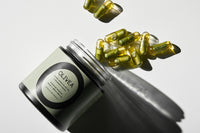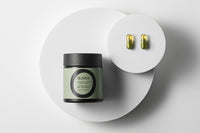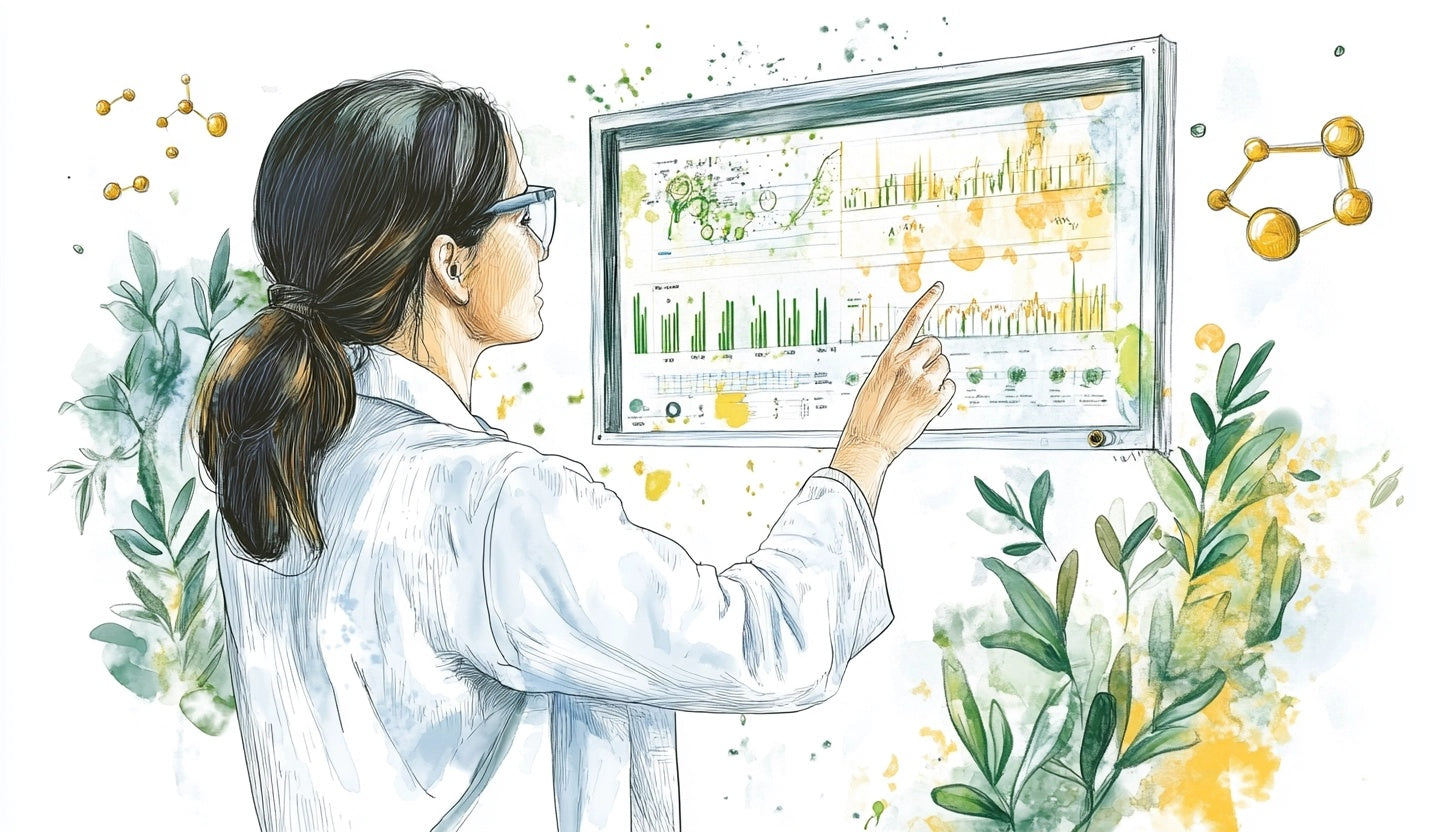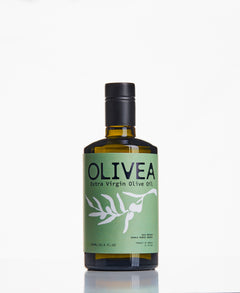25+ Hydroxytyrosol Statistics: 2025 Facts, Data, & Trends
Updated February 4, 2025
What if I told you that there's a natural compound out there that puts vitamin C and green tea to shame in terms of pure antioxidant power? A compound so potent that the European Food Safety Authority recommends consuming at least 5 mg per day for optimal health benefits? Chances are, you might not have heard of it—yet.
The compound in question? Hydroxytyrosol—a crucial antioxidant found predominantly in olives and olive oil. Despite its relative obscurity, hydroxytyrosol has been making waves in the scientific community for its impressive health properties and wide-ranging potential applications.

But what exactly makes hydroxytyrosol so special? How much of it can be found in various food sources? What does the latest research say about its effects on the body and its safety profile? And why is the global market for hydroxytyrosol expected to skyrocket in the coming years?
In this article, we'll uncover the answers to these questions and many more. Through compelling statistics and the latest scientific findings, we'll paint a vivid picture of hydroxytyrosol's incredible potential—from its unrivaled antioxidant capacity to its role in promoting optimal wellness.
The Antioxidant Power of Hydroxytyrosol
So what makes hydroxytyrosol so exciting from a health perspective? In a word: antioxidants. Hydroxytyrosol isn't just any run-of-the-mill free radical fighter—it's the undisputed champion of the antioxidant world. Let's take a look at how it measures up to the competition.

1. Hydroxytyrosol has an ORAC value of 40,000 µmol TE/g
The oxygen radical absorbance capacity (ORAC) scale is a widely used measure of antioxidant potency. It essentially tells us how many oxygen radicals a substance can neutralize. The higher the score, the more free radicals it can disarm. And hydroxytyrosol? It scores a whopping 40,000 µmol TE/g on the ORAC scale. To put that in perspective...
2. Hydroxytyrosol is 20 times more potent than vitamin C
Vitamin C is famous for its antioxidant properties, but it pales in comparison to hydroxytyrosol. With an ORAC score of just 2,000 μmol TE/g, vitamin C is 20 times less potent than hydroxytyrosol at neutralizing free radicals.
3. Hydroxytyrosol is 4 times stronger than green tea polyphenols
Green tea is renowned for its health-promoting polyphenols like EGCG. But even these potent plant compounds can't match hydroxytyrosol's antioxidant power. Green tea polyphenols have an ORAC value of 10,000 μmol TE/g—impressive, but still 4 times lower than hydroxytyrosol.
4. Hydroxytyrosol is 2 times more powerful than resveratrol
Resveratrol, the much-hyped antioxidant in red wine, also falls short of hydroxytyrosol. With an ORAC score of 20,000 μmol TE/g, resveratrol is only half as potent as hydroxytyrosol at scavenging harmful free radicals.
TL;DR Hydroxytyrosol outshines other antioxidants

When it comes to antioxidant capacity, hydroxytyrosol is in a league of its own. It leaves other well-known antioxidants like vitamin C, green tea polyphenols, and even resveratrol in the dust.
If you're looking to supercharge your body's defenses against oxidative stress, look no further than hydroxytyrosol-rich products like Olivea. Your cells will thank you.
Foods High in Hydroxytyrosol
Now that we know how impressive hydroxytyrosol's antioxidant power is, you might be wondering: what foods can I find it in? The answer lies primarily in one superfood: olives. Let's explore the best dietary sources of this extraordinary compound.

5. Black olives are the gold standard with 413 mg/100g of hydroxytyrosol
When it comes to hydroxytyrosol content, not all olives are created equal. But black olives are the clear winners, packing up to 413 mg of hydroxytyrosol per 100 grams. That's an incredible concentration of antioxidant goodness.
6. Green olives deliver up to 116 mg/100g of hydroxytyrosol
While they can't quite match their darker counterparts, green olives are still an excellent source of hydroxytyrosol. They can contain up to 116 mg of the compound per 100 grams—a substantial amount that can make a real difference to your antioxidant intake.
7. Greek-style olives contain up to 1393.30 mg/kg of hydroxytyrosol
Greek-style olives are one of nature's most concentrated sources of hydroxytyrosol, with levels reaching an impressive 1393.30 mg/kg. This abundance of antioxidant goodness is precisely why Olivea chose to feature these Mediterranean delicacies in their cutting-edge supplement. By harnessing the power of authentic Greek olives, Olivea ensures that each capsule delivers a robust dose of hydroxytyrosol, straight from one of its richest natural sources.
8. Traditional Kalamata olives provide 134.329 mg/kg of hydroxytyrosol
Kalamata olives, a staple of Greek cuisine, are another hydroxytyrosol heavyweight. They offer a substantial 134.329 mg of the compound per kilogram, making them a delicious way to bolster your antioxidant defenses.

9. EVOO's hydroxytyrosol content ranges from 0.1 to 3.47 mg/100g
Of course, we can't talk about olives without mentioning olive oil. Extra virgin olive oil (EVOO), the least refined type, contains between 0.1 and 3.47 mg of hydroxytyrosol per 100 grams. While this may seem low compared to whole olives, EVOO is still a significant dietary source—especially for those following a Mediterranean diet rich in this healthy fat.
10. Refined olive oil's hydroxytyrosol content averages 0.68 mg/100g
Refined olive oil loses some of its hydroxytyrosol content due to its heavy processing. But it still provides an average of 0.68 mg per 100 grams, which can add up if you're a regular user.
11. On average, hydroxytyrosol in virgin olive oils is 0.35 mg/100g
Virgin olive oils, despite being minimally processed, have lower hydroxytyrosol content than refined oils. Across 8 publications on virgin olive oil, the average hydroxytyrosol concentration is 0.35 mg per 100 grams.
12. Greek olive oils maintain a mean hydroxytyrosol content of 11.17 mg/kg
Interested in maximizing your olive oil's hydroxytyrosol content? Consider going Greek. Olive oils from Greece have an impressive average of 11.17 mg of hydroxytyrosol per kilogram—a testament to the country's commitment to producing high-quality, antioxidant-rich oils.
13. Olea europaea leaf extract yields 2.3 g/100g of hydroxytyrosol
Olives and olive oil aren't the only sources of hydroxytyrosol. The leaves of Olea europaea or simply olive tree is a concentrated reservoir of the compound. In fact, olive leaf extract can yield up to 2.3 grams of hydroxytyrosol per 100 grams—an extraordinary amount that highlights the leaf's untapped potential as a hydroxytyrosol source.

14. Wines carry 2.1–6.1 mg/L of hydroxytyrosol
While wines can't compete with olives and olive oil in terms of hydroxytyrosol content, they do contain small but notable amounts of this potent polyphenol.
The data show that red wines have the highest levels, averaging 5.3 mg/L. Rosé wines follow with a mean of 6.1 mg/L, and white wines have the least at 2.1 mg/L on average.
While you'd have to drink quite a bit of vino to get a meaningful hydroxytyrosol dose, enjoying a glass of red wine with your evening meal could provide a small antioxidant bonus.
TL;DR Olives > Olive Oil > Wine

When it comes to dietary hydroxytyrosol, olives and olive products reign supreme. Black and green olives, especially Greek varieties like those used in Olivea supplements, are the richest sources—packing hundreds of milligrams of hydroxytyrosol per 100 grams.
Olive oils provide smaller but still significant amounts, with EVOO and Greek varieties boasting the highest concentrations. Wine, particularly red varieties, also contains modest levels of hydroxytyrosol, adding to its health-promoting reputation.
While olive leaf extract is a less common source, it yields an impressive 2.3 grams of hydroxytyrosol per 100 grams.
The takeaway? For an antioxidant boost, you can't go wrong with olive-derived delicacie—and Olivea's potent formula harnesses the best of the bunch. So go ahead, embrace the Mediterranean way and let these hydroxytyrosol heavy-hitters elevate your wellness journey.
Estimated Daily Intake of Hydroxytyrosol
So we know that olives and olive oil are the best dietary sources of hydroxytyrosol. But how much of this potent polyphenol are people actually consuming on a daily basis? Let's take a look at the estimated daily intakes across Europe.

15. Greece leads with the highest intake at 6.82 mg of hydroxytyrosol per day
Given their long tradition of olive cultivation and consumption, it's no surprise that Greeks have the highest daily intake of hydroxytyrosol in Europe. The average Greek consumes an impressive 6.82 mg of this antioxidant powerhouse per day, largely thanks to their high consumption of olives and olive oil.
16. Average Europeans consume 1.97 mg of hydroxytyrosol daily
Across the European Union, the mean daily intake of hydroxytyrosol is estimated at 1.97 mg per person. This is lower than the intake in olive-centric Greece and as we’ll soon learn, way lower than the ideal daily intake.
17. Austrians consume the least hydroxytyrosol in Europe at just 0.13 mg per day
At the other end of the spectrum, Austrians have the lowest estimated daily intake of hydroxytyrosol in Europe, at a mere 0.13 mg per day. This likely reflects a dietary pattern that includes fewer olives and olive oil compared to their Mediterranean counterparts.
TL;DR Hydroxytyrosol intake peaks in Greece, dips in Austria
Daily hydroxytyrosol intake varies widely across Europe, with Greeks consuming the most at 6.82 mg per day, and Austrians the least at 0.13 mg. The average European takes in 1.97 mg of this potent antioxidant daily. While these amounts may seem small, remember that hydroxytyrosol is incredibly powerful—even at low doses, it can offer significant health benefits. And for those looking to boost their intake, supplements like Olivea provide a concentrated dose of 20 mg hydroxytyrosol per capsule, making it easy to reap the rewards of this olive-derived superfood.
Hydroxytyrosol Safety and Dosage Guidelines
Now that we've seen the impressive health benefits and typical dietary intakes of hydroxytyrosol, you might be wondering: how much of this potent polyphenol is safe to consume? And what's the optimal daily dose for maximizing its potential perks? Let's go over the latest research on hydroxytyrosol safety and dosage guidelines.

18. The NOAEL for hydroxytyrosol is 500 mg/kg/day
One key measure of a substance's safety is its no-observed-adverse-effect level or NOAEL. This is the highest dose that can be given without causing any detectable harmful effects.
For hydroxytyrosol, NOAEL has been established at a whopping 500 mg per kg of body weight per day in animal studies.
To put that in perspective, a 150-pound (68 kg) person would have to consume over 34,000 mg of hydroxytyrosol daily to exceed this safety threshold. That's 1700 times the amount found in a typical Olivea capsule!
19. EFSA's golden number: 5 mg of hydroxytyrosol per day
The European Food Safety Authority (EFSA), a leading authority on dietary guidelines, has set a recommended daily intake of 5 mg of hydroxytyrosol and its derivatives for supporting heart health. This amount has been shown to protect LDL cholesterol from oxidative damage, a key factor in the development of cardiovascular disease.
Olivea's 20 mg dose provides 4 times this minimum recommended amount, offering a potent daily boost of this cardioprotective compound.
20. The MoE for hydroxytyrosol is 100 for children and at least 200 for adolescents and adults
The Margin of Exposure (MoE) is a measure of safety that compares the amount known to cause harm (i.e., the NOAEL) to normal exposure levels. The larger the MoE, the lower the potential risk. For hydroxytyrosol, the MoE is a reassuring 100 for children and at least 200 for adolescents and adults, indicating a wide safety margin for typical daily intakes.
Even at the high 20 mg hydroxytyrosol dose found in Olivea, the MoE remains well above these minimum thresholds, supporting the safety of this supplement for regular use.
TL;DR Hydroxytyrosol is well-tolerated and safe

All in all, the research paints a compelling picture of hydroxytyrosol as a safe and well-tolerated compound, even at doses far exceeding typical dietary intakes. With its wide safety margins and EFSA-approved daily dose, this olive-derived polyphenol emerges as a promising daily health ally.
And with supplements like Olivea providing a potent 20 mg dose in a convenient capsule form, it's never been easier to harness the protective power of hydroxytyrosol.
Hydroxytyrosol Market Size and Growth
Given its impressive health benefits and growing body of supportive research, it's no wonder that hydroxytyrosol is generating serious buzz in the wellness world. But just how big is the market for this rising star ingredient? And what kind of growth can we expect in the coming years? Let's take a closer look at the numbers behind the hydroxytyrosol hype.

21. In 2024, the global hydroxytyrosol market was valued at USD 751.2 million
As of 2024, the worldwide market for hydroxytyrosol was estimated at a robust USD 751.2 million. This substantial valuation reflects the growing recognition of hydroxytyrosol's health potential and its increasing incorporation into functional foods, beverages, and dietary supplements.
22. The global hydroxytyrosol market will grow at a 6.6% CAGR from 2024 to 2034
Looking ahead, experts predict that the global hydroxytyrosol market will expand at a compound annual growth rate (CAGR) of 6.6%, reaching USD 1,425.5 million by 2034. This steady growth trajectory suggests a bright future for this potent polyphenol, as more and more consumers and manufacturers alike seek to tap into its health-promoting properties.

23. Natural hydroxytyrosol will generate USD 930.8 million in revenue by 2034
Within the broader hydroxytyrosol market, natural hydroxytyrosol—sourced directly from olives and olive byproducts—is poised for particularly impressive growth of 6.5% CAGR.
By 2034, natural hydroxytyrosol is expected to generate a whopping USD 930.8 million in revenue, underscoring the strong consumer preference for plant-based, minimally processed ingredients. Supplements like Olivea, which feature natural hydroxytyrosol from cold-pressed EVOO, are well-positioned to ride this wave of demand.
24. Hydroxytyrosol dietary supplements will grow at a 9.1% CAGR through 2034
Drilling down further, the dietary supplements segment of the hydroxytyrosol market is projected to expand at an even faster clip, with a CAGR of 9.1% through 2034. This means that by 2034, hydroxytyrosol dietary supplements will reach USD 501.8 million!
As more consumers prioritize proactive health and seek out targeted wellness solutions, hydroxytyrosol and polyphenol supplements in general are poised to play an increasingly prominent role.
25. Virgin olive oil will command 45.1% of the hydroxytyrosol market by 2034
Among the various sources of hydroxytyrosol, virgin olive oil is expected to dominate, accounting for a 45.1% share of the total market by 2034. This makes sense, given that virgin olive oil—and particularly EVOO—is one of the richest natural sources of hydroxytyrosol, and a staple of the health-promoting Mediterranean diet.
Bonus: The U.S. will dominate global hydroxytyrosol consumption through 2034
From a geographical perspective, the United States is projected to lead the pack in hydroxytyrosol consumption. This dominance reflects the strong and growing interest in health and wellness among American consumers, as well as the country's sizable supplement market. As more U.S. shoppers discover the benefits of hydroxytyrosol, demand for ingredients like Olivea's EVOO is likely to surge.
TL;DR The hydroxytyrosol market is booming

The hydroxytyrosol market is a dynamic and rapidly evolving space, with plenty of room for growth in the coming years. Fueled by mounting scientific evidence, growing consumer interest in natural wellness solutions, and the rising popularity of functional foods and supplements, hydroxytyrosol is poised for a bright future. And with its potent combination of natural EVOO and concentrated hydroxytyrosol, Olivea is well-positioned to ride this rising tide of demand.
Hydroxytyrosol: The Science-Backed Boost You Need
Throughout this article, one theme has resounded loud and clear: hydroxytyrosol is a nutritional force to be reckoned with. Its unparalleled antioxidant capacity, coupled with its impressive safety profile and wide-ranging health benefits, make it a true standout in the world of wellness.
But what's truly game-changing about hydroxytyrosol is how seamlessly it can integrate into your daily routine. We don't need to overhaul our lives or take handfuls of pills to tap into its potential. Something as simple and delicious as a drizzle of EVOO, a handful of olives, or an Olivea capsule can provide a meaningful boost to our body's defenses.

Of course, hydroxytyrosol is not a panacea. No single compound, no matter how potent, can replace the foundational pillars of health—a nutritious diet, regular physical activity, and balanced lifestyle. But what hydroxytyrosol offers is a powerful complement to these fundamentals, an extra layer of cellular protection that can help tip the scales in our favor.
The science behind hydroxytyrosol is robust and ever-evolving. From epidemiological studies on Mediterranean populations to cutting-edge cellular research, the evidence paints a compelling picture: hydroxytyrosol is a compound with profound health-promoting potential. And with its excellent safety profile and increasing availability in functional foods and supplements, it's never been easier to harness its benefits.
But perhaps the greatest gift hydroxytyrosol offers is empowerment. In a world where so many aspects of our health feel beyond our control, making a simple, science-backed choice like incorporating more hydroxytyrosol-rich foods and supplements into our routines can be deeply reassuring. It's a reminder that we have agency in our wellness journey—that through small, consistent actions, we can nurture our most precious asset: our health.




